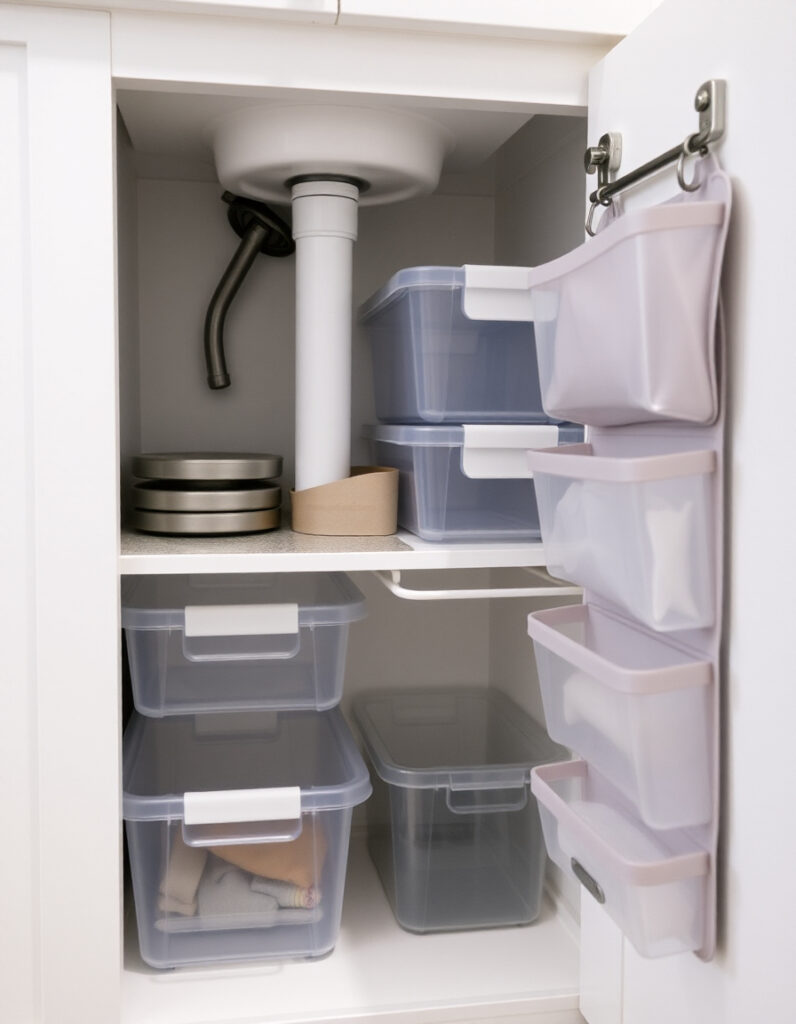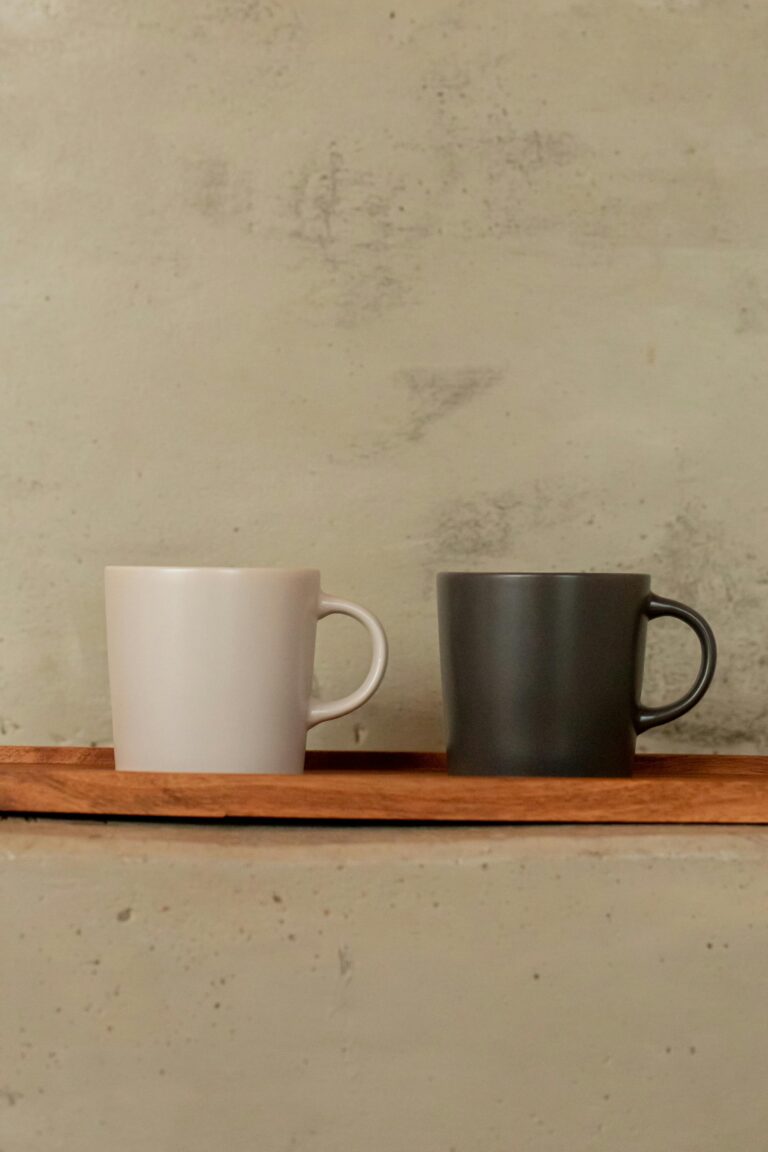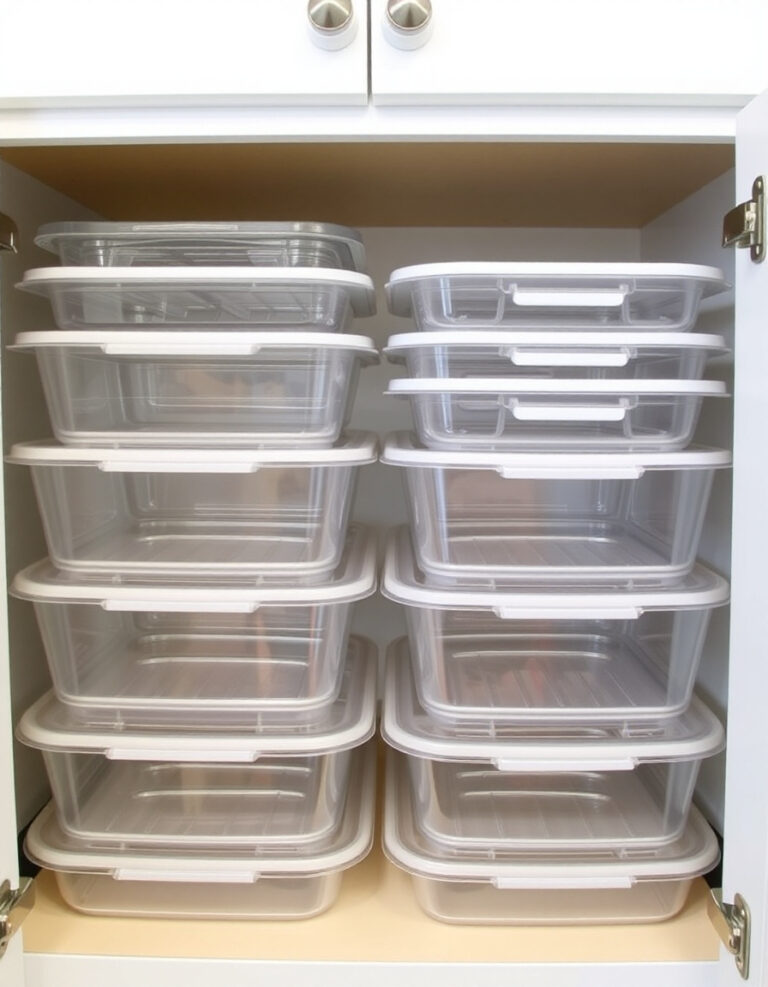That cabinet under your kitchen sink can turn into a chaotic mess fast. Cleaning supplies, trash bags, sponges, and random bottles pile up until nothing’s easy to find. Let’s look at some practical ways to organize that space so it works harder for you.
Why Under-Sink Storage Matters in Small Kitchens

When cabinet space is limited, every square inch counts. The area under your sink tends to be awkward because of plumbing, but it’s still valuable real estate. With the right setup, you can fit more than you’d expect and keep things accessible at the same time.
1. Sliding Drawer Organizers
Sliding drawers transform how you access items tucked in the back of the cabinet. Instead of crouching down and reaching blindly, you pull out the drawer and see everything at once.
Look for models that fit around pipes. Measure your cabinet’s interior dimensions before buying. Some drawers come with adjustable dividers, which help you customize compartments for spray bottles, brushes, and sponges.
Install them on the cabinet floor for stability. You’ll save time searching for things and reduce the frustration of knocking over bottles every time you grab something.
2. Tension Rod Dividers
Tension rods aren’t just for curtains. Mount one or two horizontally inside the cabinet to create vertical storage for flat items like cutting boards, baking sheets, or cleaning cloths.
Position the rods at different heights depending on what you’re storing. This trick works especially well if your cabinet is taller than it is wide. You can also hang spray bottles from the rods by their triggers, freeing up floor space below.
Tension rods cost very little and install in seconds without tools. They’re easy to adjust or remove when your storage needs change.
3. Stackable Bins with Handles
Clear stackable bins help you group similar items together. Handles make it easy to lift the top bin off when you need something from the bottom tier.
Use one bin for dishwasher pods and sponges, another for garbage bags, and a third for cleaning sprays. Label each bin if you want extra clarity, though clear plastic often speaks for itself.
Choose bins sized to fit your cabinet’s width. Stackable options work well in deeper cabinets where floor space is limited but vertical room is generous.
Also Read: 8 Over-The-Toilet Storage Solutions For Tiny Bathrooms
4. Over-the-Cabinet-Door Organizers
The inside of your cabinet door is often ignored. Hanging organizers attach to the door and hold smaller items like gloves, scrub brushes, or dish towels without taking up shelf space.
Look for organizers with pockets or hooks that fit your door’s thickness. Some models use adhesive strips, while others hook over the top edge. Check that the organizer won’t interfere with the door closing fully.
This setup keeps frequently used items within arm’s reach. It’s especially helpful if your cabinet floor is crowded with larger bottles or bins.
5. Turning Tray
A turning tray makes corner cabinets and deep spaces much easier to navigate. Spin the turntable to bring items to the front instead of digging through layers of bottles.
Choose a turntable with a raised edge to prevent items from sliding off. Place taller bottles toward the center and shorter ones near the rim for better visibility.
This works well for dish soap, surface cleaners, and other frequently grabbed supplies. You can also use two smaller turntables side by side if your cabinet is wide enough.
Read More: How To Organize Under A Pedestal Sink With No Cabinet
6. Expandable Shelving Inserts
Expandable shelves create a second tier of storage inside your cabinet. These inserts double your usable space by stacking items vertically without actually stacking them precariously on top of each other.
Adjust the width to fit around pipes and match your cabinet dimensions. The elevated platform gives you clear sightlines to what’s on both levels, so nothing gets forgotten in the back.
Use the lower level for bulkier items like extra trash bags or large spray bottles. Reserve the upper shelf for smaller essentials you use daily, like sponges or scrubbers.
What to Keep in Mind
Before adding organizers, clear out expired products and duplicates. You’d be surprised how much space opens up when you remove things you don’t actually use.
Measure your cabinet’s height, width, and depth, including the space around pipes. Many organizers are adjustable, but you’ll avoid returns by knowing your dimensions upfront. Think about what you reach for most often and place those items in the easiest-to-access spots.
Water leaks happen under sinks, so avoid storing things that can’t handle moisture. Keep paper products and anything absorbent in a different cabinet if possible.
Wrapping Up
A little organization under your sink can make daily tasks smoother and less frustrating. These ideas give you options to fit different cabinet sizes and storage needs. Pick one or two that make sense for your space and give them a try. You might find yourself wondering why you didn’t tackle this sooner.



